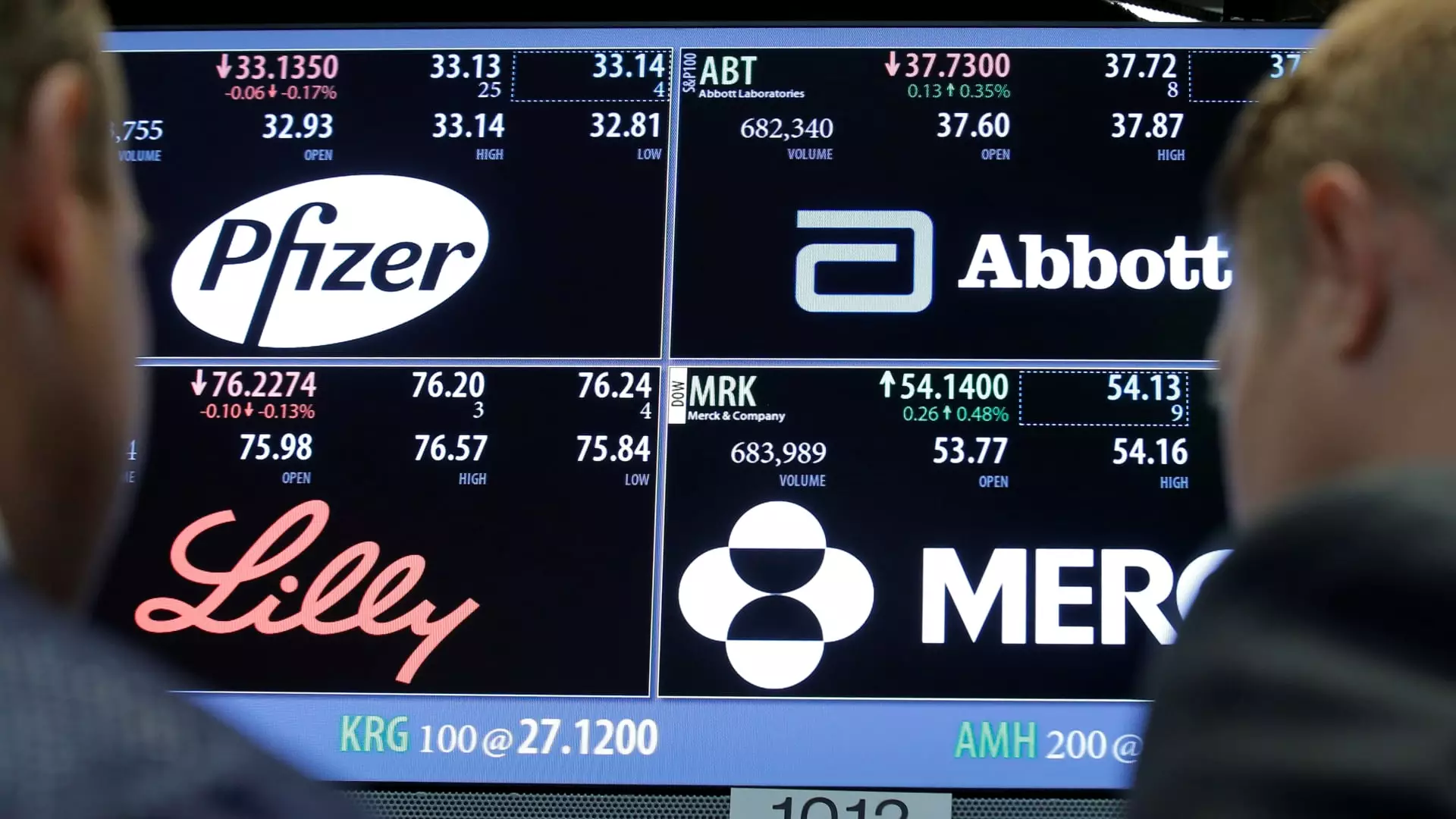The investment landscape is always shifting, and currently, there’s considerable buzz regarding which sectors are undervalued and ripe for potential outperformance. One sector continuously emerging in discussions among financial analysts and investors is biopharmaceuticals. With the pressing question of which equities can outperform the S&P 500 looming, a closer examination of large drug and biotech stocks reveals significant opportunities, particularly in companies like Merck, Pfizer, Bristol Myers Squibb, Amgen, and Biogen. As we dive deeper into this sector, we should also scrutinize the hurdles that have hindered its growth and the possible catalysts, notably artificial intelligence, which could herald a new era for biopharmaceutical innovation.
The medical field has witnessed seismic shifts over the past few years, particularly with the emergence of life-altering treatments, like GLP-1 drugs from Eli Lilly and Novo Nordisk. However, the exclusion of these stellar performers from the broader discussion of biopharmaceutical dynamics is essential. These drugs have soared in popularity, projected to surpass staggering revenue benchmarks of over $100 billion by 2025. This sets the stage for smaller players, traditionally overlooked due to performance stagnation, to garner investor attention.
Despite their ambitious pipelines, many investors remain hesitant. High-profile issues, such as patent expirations and increasing price controls, serve as deterrents. Furthermore, the lofty goals set for research and development efforts have faced setbacks, leading to skepticism about the industry‘s ability to deliver new drugs that radically change treatment paradigms.
To paint a clearer picture, we need to evaluate the financial health of these companies in juxtaposition with the broader market. Biopharmaceutical firms exhibit promising metrics. For instance, the projected EBITDA margin for 2024 stands at an impressive 38%, significantly exceeding the S&P 500’s average of 31%. Notably, the average net profit margin for these biopharmaceuticals is 24%, compared to a mere 17.2% across mainstream indices. These margins signal robust profitability, indicating that even amid market turbulence, these companies are effectively managing costs and generating substantial earnings.
Furthermore, these firms boast appealing valuation ratios. The average price-to-earnings (P/E) ratio for the biopharma sector sits at approximately 12.7—a marked contrast to the higher P/E ratio of 20.6 for the S&P 500. While lower multiples can often lead to caution among investors, they also suggest potential mispricing that could yield significant upward movements should market perceptions shift.
The biopharmaceutical landscape isn’t without its trials, though. The sector’s historical context reveals a decline in product innovation since the 1990s when a surge of breakthroughs advanced treatment options across various diseases. Issues have arisen as the industry grapples with the irony of expending immense resources on R&D, only to encounter a dearth of groundbreaking new compounds. The simplistic targets have been largely saturated, leaving behind multifaceted diseases like Alzheimer’s and Parkinson’s that require intricate solutions.
The perception that biopharma is lagging in innovation can deter many potential investors. The longstanding view that the sector is stagnant casts a long shadow over its ability to emerge from this trough of disillusionment. Investors must navigate not just the financials but also the inherent risks associated with an industry in transition.
Amid these challenges, the integration of artificial intelligence (AI) presents an immense opportunity. As drug development historically takes years—and often fails—AI could be the catalyst to spark a renaissance in biopharmaceutical advancements. By harnessing vast quantities of data, AI technologies can streamline the research process, enhance clinical trial designs, and identify patient populations more effectively. For instance, real-world applications of AI have been observed in Pfizer’s rapid vaccine development during the COVID-19 pandemic, which underscored the value of modern technology in overcoming traditional barriers.
Furthermore, AI’s ability to analyze biological patterns could revolutionize the discovery phase of drug development. Techniques such as protein structure prediction provide a pathway for deeper understanding of complex diseases, paving the way for targeted interventions that were previously unimaginable. The prospect of characterizing cellular communications based on historical data could usher in a new wave of breakthroughs for conditions that have historically been neglected.
All things considered, the biopharmaceutical sector warrants renewed analysis. With healthy valuations and profit margins alongside a potentially transformative enhancement through AI, establishing a position in selected biopharma stocks could very well be a strategic move for investors willing to embrace the associated risks. The cyclical nature of markets means that positioning now, when sentiment is subdued, may yield outsized rewards in the future, particularly if these companies can scale effective drug development processes and innovate with precision.
While it is crucial to remain aware of the pitfalls associated with these investments, the blend of favorable financial metrics, historical significance, and potential technological advancements proposes a compelling narrative for the biopharmaceutical sector moving forward.

